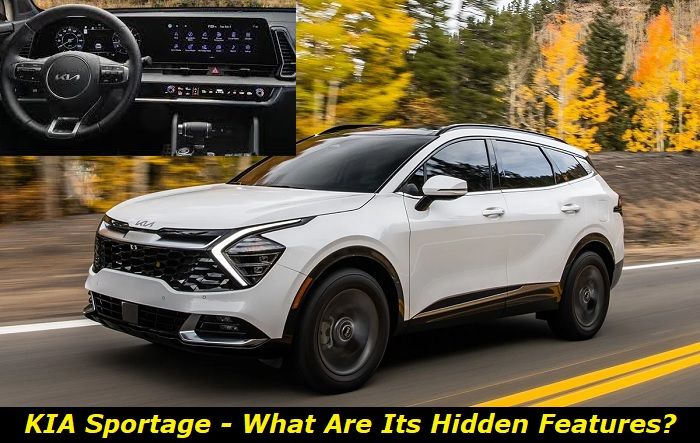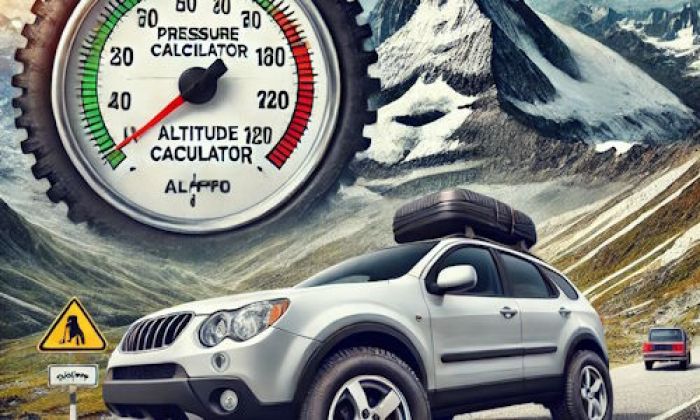If you ever saw a truck with a 6.4 Power Stroke engine ripping next to you, spitting smoke all over the place when going pedal to the metal, basically you know everything. This motor is a diesel monster as long as it runs. The engine itself is almost 390 cu in and has 2 turbochargers with a layout that features two identical turbochargers in parallel, each processing half of the V-type engine's produced exhaust through independent piping.
Key features and my opinion about the engine
- Production years:2008-2010
- Average lifespan of 6.4 Power Stroke:230,000-250,000 miles
- Fuel supply type:Common Rail
- Power range:350 hp
- Fuel efficiency:bad
- Engine block material:cast-iron
- Engine reliability score:low
- The most common problems:oil consumption, turbo problems, EGR problems, DPF issues, high cost of maintenance, poor fuel economy.
.jpg)
What do we know about the 6.4 Power Stroke?
It is beloved by a lot of people, especially because of its capabilities. Being a diesel, it can produce 650 lb-ft of torque which is just right for towing things, very heavy things... It matches the requirements of light trucks. Also, it was put into the Excursion and the E-Series. It can last a long time and has nice torque and horsepower thanks to the twin-turbo setup it was made with.
After all the old big American engines were nice because they provided a great base for tuning. You bought the car and put a big and well-made turbo on it. It was ever-lasting. But if you as a manufacturer start making turbos in bulk, they will be vulnerable. And if you put 2 of them into a car, the multiplier of the engine breaking down doubles. Keep this fact in mind!
The car community is always a true-speaking mess. You can't lie to them and you can't cheat on them without punishment. The "gang" is made up of very different people. You can find everyone from lawyers to actual car mechanics. They help each other and fight wars against manufacturers who value money more than loyalty. They love nice engines but hate unreliable ones. The 6.4L Power Stroke and Ford itself have an overall bad reputation amongst car people with untrustworthy communication and inconsistent build quality.
From the beginning of time if Ford built something it was either bulletproof and indestructible or it fell apart in 2 weeks of use. This is why after a while people started favoring GM's light trucks.
Application and siblings of the 6.4 Power Stroke
The Power Stroke trademark is a name used by Ford for a specific engine type. The engines were originally produced by Navistar International from 1994 to 2010. (In 2011 Ford took over the production process, getting more profit) It was an import engine type rebranded and put into Ford-made trucks. They used and are still using it in various models.
It was put into the E-Series like the Econoline which had a Power Stroke option and the LCF which is a medium-duty commercial truck. It was also used in the Excursion - a full-sized SUV with heavy use in mind - and the Ranger which we all know what is. Last but not least, for sure it was a nice fit for the F-Series including the Super Duty lineup.
Back then you could just walk into your closest Ford dealership and buy a new car with a Power Stroke engine. It didn't matter if it was a light-duty F-250 or the F-750 Super Duty, but the re-branded Ford engine also had to deal with competition, in the name of GM's Duramax V8 and Dodge's Cummins inline-six B-series.
We should mention that the 6.4 had 5 siblings, so the engine family was quite big:
- The 7.3L Power Stroke - It was made from 1994 and was capable of producing 250 horsepower and 505 lb-ft of torque with automatic and 525 lb-ft of torque with manual transmission.
- The 6.0L Power Stroke - A really powerful engine, with a variable-geometry turbocharger producing 325 horsepower and 570 pound-feet of torque, making it a powerful yet problematic engine.
- The 6.7L Power Stroke - The first emission-controlled engine. It had a Diesel Particle Filter (DPF) and after an onboard software update, it was capable of producing 400 horsepower and 800 lb-ft of torque.
- The 3.2L Power Stroke - The only different engine. It was an inline-five engine, with a combined catalytic converter. It housed the DPF as well. It was a more environmentally friendly, but weaker engine. Gave out 185 hp and 350 lb-ft of torque.
- Finally, the 3.0L Power Stroke - Was made from 2018 as a medium-duty engine. It's only a 6-cylinder V-shaped engine, putting out 250 hp and 440 lb-ft of torque. It was paired with a 10-speed automatic and was able to tow 11 thousand pounds.
So, what's the Turbo Failure Problem is All about?
As you probably know, the engine works via the combustion of fuel and air mixture happening in each cylinder. The more air you can push into the mixture, the stronger it will „detonate". There are two ways of doing so. One of them being a supercharger.
This is a device attached to the main serpentine belt. It doesn't have a "lag", because it is in direct contact with the engine. The other way is a turbo. Turbos are being spooled up on one side - the hot side - with exhaust gases, and they suck air in on the cool side. It's a very convenient way of making more power and getting lower gas mileage. But what should you do if it stops working properly?
In case of a turbo failure, you will notice a lot of things, you should just keep your ear and eyes open. Here are the symptoms of a turbocharger failure in your 6.4 Power Stroke:
- Very special noise of a turbocharger
The first thing you will probably notice while driving a car with a faulty turbocharger is a very irritating siren-like noise. It is caused by the compressor wheel meeting the much higher speed of incoming air.
If the connector axis - which connects the compressor and the turbine wheel - breaks in half or into small pieces the compressor wheel stops working correctly. The whole mechanism loosens up, and the wheel from then on only acts as a restrainer. It blocks the airflow. Sometimes it gets spooled up, but only by the going-through air. This is what you hear as a siren noise while accelerating.
Blocking the incoming air leads to a lower Air Fuel Ratio (AFR) and a richer mix. The engine has a lot of sensors, like the MAF, short for Mass Airflow Sensor. It detects how much air is being sucked in at each moment, and sends a signal to the onboard computer. Then it sets the mixture. Less air = less fuel = less mixture.
- Very poor acceleration of the vehicle
The second thing you will notice is the poor acceleration caused by the engine suffocating itself. On base RPMs, you probably won't feel too much, because some air can get past the vanes, but at higher speeds, your car will even struggle to maintain tempo.
- Black smoke from exhaust
The third one is not really noticeable from the driver's seat as long as it doesn't get way too bad. It is, ladies and gentlemen, exhaust smoke. If you notice anything like this, you shouldn't rush to the car dealer immediately. You can identify the problem by the color of the smoke. The white and grey colors are irrelevant to us because they indicate some kind of head gasket leak.
If you are working with a 6.4L Power Stroke you should be looking for black or blue-colored exhaust smoke. They mean that: too much fuel is being burned (black) and oil is being burned (blue).
Not only your turbo's axis can crack, but even its housing. If a turbo's housing gets hit too hard or gets too hot and cools down way too fast, it can form serious cracks. It allows oil to flow from the lubrication container straight into the air inlet. It is dangerous for your engine.
- Increased oil consumption
A lot of engines, like the 6.4L PS, are made with a single oil line. It supplies the motor as well as the twin-turbo setup. If you open up a previously closed circuit, you will start losing oil. This is exactly what happens over time, with a cracked turbocharger, so the third indicator of turbo failure is increased oil consumption.
- Boost gauge failure
We left the best and easiest for last. Almost all Power Stroke fitted Ford trucks have a factory-inserted boost gauge somewhere in the cabin. It displays the amount of boost you are currently running at. In case of a failure, it either flops to zero or swings around it.
- Check Engine light, of course
We wanted to include the most obvious as well, which is the Check Engine light. It doesn't specify the problem, but if you notice one or more of the above combined with the CE light, you should contact a mechanic for further research.
What should you know if bad things happen?
Unfortunately, if one or more of your turbos fail it will be an expensive game. Since a turbocharger is so precisely made - it has gaps, like one-hundredth of an inch - you can't repair it. It goes straight into the trash and you can buy a new one anytime.
If you have the financial possibility, you should always go to the mechanic as soon as possible, since the longer you drive with bad turbos, the more damage they can cause to the engine.
Lastly, the average cost of a new turbo for a 6.4L Power Stroke is around the 3000$ mark. This is also something you should consider before buying a car equipped with one of these so powerful yet pretty weak engines.
About the authors
The CarAraC research team is composed of seasoned auto mechanics and automotive industry professionals, including individuals with advanced degrees and certifications in their field. Our team members boast prestigious credentials, reflecting their extensive knowledge and skills. These qualifications include: IMI: Institute of the Motor Industry, ASE-Certified Master Automobile Technicians; Coventry University, Graduate of MA in Automotive Journalism; Politecnico di Torino, Italy, MS Automotive Engineering; Ss. Cyril and Methodius University in Skopje, Mechanical University in Skopje; TOC Automotive College; DHA Suffa University, Department of Mechanical Engineering






Add comment